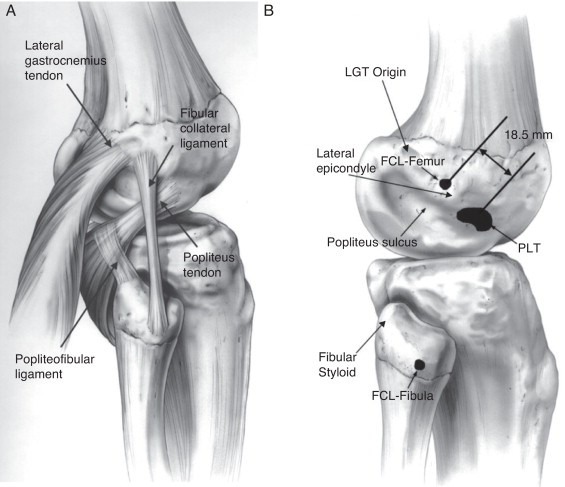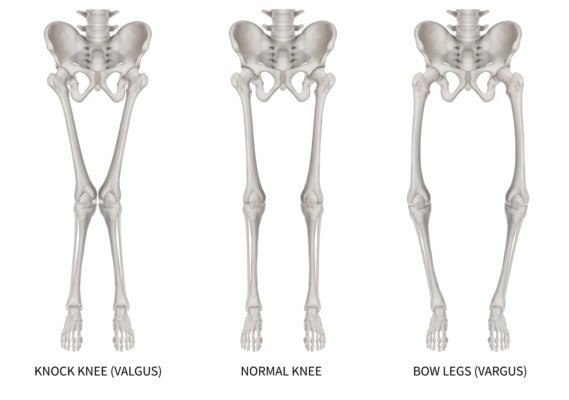Revision anterior cruciate ligament surgery
Your new anterior cruciate ligament torn again
Why does a newly reconstructed anterior cruciate ligament tear again?
A technical cause
Persistent instability

Figure 1 – The structures on the outer side of the knee that form the posterolateral corner.
Anatomy

Figure 2 – The different anatomical shapes of the leg. On the left, a valgus leg alignment (X-leg), in the middle, a neutral leg alignment, and on the right, a varus leg alignment (O-leg)

Figure 3 – The tibial slope. The steeper this angle, the higher the likelihood of re-tearing the cruciate ligament.
Another knee accident
Biology
In conclusion, the re-tear of the anterior cruciate ligament reconstruction is a complex problem where multiple factors are often involved. If you experience a re-tear of your ACL, it is important to analyze all these different factors to determine the appropriate strategy for the revision of the cruciate ligament.
How is a revision of the anterior cruciate ligament reconstruction performed?
Once all the factors have been evaluated, a surgical plan can be formulated. In the majority of cases, only one surgery is needed to replace the anterior cruciate ligament again. We always strive to replace the new ligament with the patient’s own tissue. This usually consists of hamstring tendons, the patellar tendon, or the quadriceps tendon (Figure 4). If necessary, we obtain these grafts from the other knee. We try to avoid using donor tendons as much as possible, as the results with donor tendons are inferior to using the patient’s own tissue.

Figure 4 – The different tendons that can be used to replace the cruciate ligament.